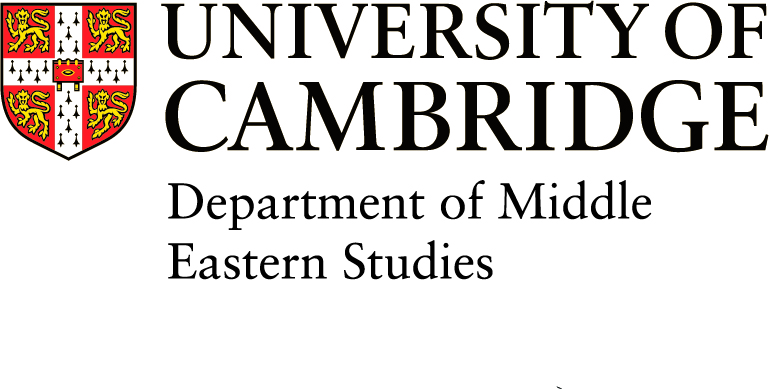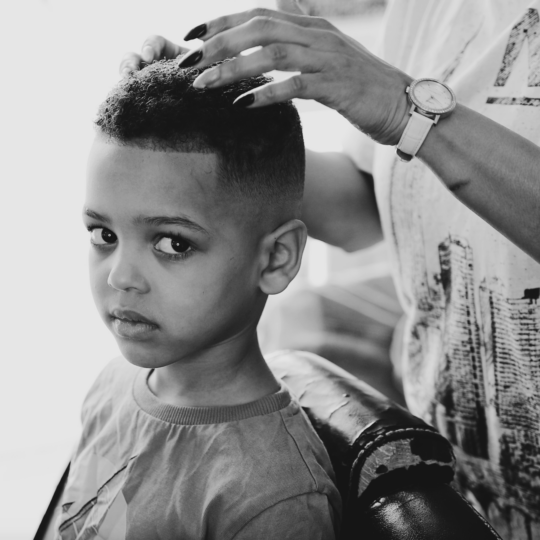| 15 Dec 2021 - 17 Dec 2021 | all day | online | |
- Description
- Programme
- Call For Papers
Description
From morning hunt to beloved gazelle: literary and visual representations of animals from Central Asia to the Maghreb
A conference organised in conjunction with the Faculty of Asian and Middle Eastern Studies
Convenors
- Christine van-Ruymbeke
- Christiane Esche-Ramshorn
- Charis Olszok
Speakers
- James Montgomery (University of Cambridge)
- Sarra Tlili (University of Florida)
Summary
Animals occupy a prominent place across the literatures and arts of the Middle East, North Africa, and the Persianate and Turkish lands. From the pre-Islamic Arabic qaṣīda to the Persian Shahnameh to modern novels, illustrated manuscripts, films and contemporary art, nonhuman animals dramatise explorations of power, ethics, spirituality and, perhaps above all, what it means to be human. Within the vastly varied geographies encapsulated within these regions, they animate desert survival, the imagined idyll of court life and the rapidly changing face of urban existence. They are depicted in their raw physicality, exemplified in the unsparing detail of camel descriptions, from the pre-Islamic muʿallaqa of Ṭarafa to the modern Libyan novel, al-Tibr (1989; Gold Dust, 2008), by Ibrāhīm al-Kūnī (b. 1948). They are portrayed as fully speaking and plotting characters in the tales of Kalīla wa-Dimna, later premodern works inspired by them, and as symbols in the contemporary political novel. They embody spiritual yearning, whether in the form of the classical ghazal or modern poetry and film. Visual representations of animals vary from stylized calligraphic poems, illustrated literary scenes, margins filled with imaginary dragons or zoologically perfect gazelles. Animals, as these few examples suggest, stand at the heart of the regions’ literatures and art, inviting reflections on their symbolic import, but also what these works say about animals themselves, the ecologies which they inhabit, and the impact of humans upon them.
To date, however, this rich presence has received little focused and sustained scholarly attention within Middle Eastern studies, while, in other disciplines, the field of Animal Studies has been rapidly growing. This conference therefore seeks to open this conversation, through rethinking the literatures and art of the Middle East and North Africa through the presence of non-human animals, and through addressing and challenging the primarily Eurocentric foundations of Animal Studies, forging an alternative genealogy of human thinking on animals beyond the Western Cartesian tradition. We invite papers that consider how animals shape the structure, imagery, and language of literary and artistic creativity. Through tracing the migration of animals across aesthetic forms, we seek to gain fresh perspectives on the entanglement of species, on literary, cultural, and creative boundaries, and the development of genres, as well as their rooting in the material world. Above all, we hope to establish connections across geographies and timeframes, establishing comparative perspectives rooted in the rich presence of literary and artistic animals.
If you have any specific accessibility needs for this event please get in touch. We will do our best to accommodate any requests.
Supported by




Programme
| All times are in GMT | Wednesday 15 December |
| 9.00 - 10.00 | Welcome and Keynote: ‘Translating the nonhuman world’ |
| 10.00 - 11.30 | Animals and politics in the premodern period ‘Slaughtering foxes in the vineyard? A pervasive topos and its Mise-en-Scène in early and classical Arabic historiography of the early Islamic conquests’ ‘Ibn Sharaf al-Qayrawānī’s ode to a giraffe: An episode in Fatimid – Zirid diplomatic relations’ |
| 11.30 - 11.45 | Break |
| 11.40 - 13.15 | Animals and political margins in twentieth-century literature ‘Wild men of Yemen and their beasts: Jews, Muslim pariahs, and animals at the margins of Yemeni society’ ‘Narrating through animals: The nonhuman as ethical agent in contemporary central asian literature’ ‘Animal representations and beyond: Their absence, presence and manifestations in the literature of life-imprisoned Kurdish writers’ |
| 13.15 - 14.00 | Lunch |
| 14.00 - 15.30 | Animals, sickness and mourning ‘Patient animal: Science and care in medieval Arabic literature’ ‘Desert animals: Mourning and the she-camel in Bedouin poetry’ ‘Attachment and loss: Animal rithāʾ in Arabic poetry’ |
| 15.30 - 15.45 | Break |
| 15.45 - 17.15 | Desert animals ‘“A Specifically Libyan maskh”: Exploring metamorphosis in the Libyan novel’ ‘Beyond the noble savage: Munif, Koni, and the grace of the animal world’ ‘Oneness and the Waddān: Blurring human-animal boundaries in Ibrahim al-Kūnī’s Nazīf al- Ḥajar (The Bleeding of the Stone, 2002)’ |
Thursday 16 December |
|
| 9.00 - 10.30 | Animals in the arts of Armenia ‘Mediators between worlds and cultures: Sirens in the medieval Armenian and Islamic art of the 10th–14th centuries’ “Master of the Garden”: The image of bear in early medieval art of Armenia and neighbouring countries’ ‘The depiction of animals and royal hunt in cilician miniature painting (Gospel no. 9422 of Matenadaran)’ |
| 10.30 -10.45 | Break |
| 10.45 - 12.15 | Animals, film and popular culture ‘The puppet animal as a social and political narrative body in the performing arts in Iran’ ‘Dealing with the stray: Film and cartoon portrayals of homeless dogs and the human-dog interactions in the modern Middle East’ ‘At the zoo in Palestine’ |
| 12.15 - 13.00 | Lunch |
| 13.00 - 14.45 | Horses and horse hybrids ‘Marked on the arse of the asb: the symbol and symbolism of horse brands in Persianate arts circa 1500—1850’ ‘Banāt al-rīḥ: Mythical horse hybrids in early Islamic literature’ ‘The monstrous body of Jewish converts in the Spanish al-Buraq’ |
| 14.45 - 15.00 | Break |
| 15.00 - 16.30 | Animals in modern Persian literature ‘The representation of animals and animal rights in Sadegh Hedayat’s “The Benefits of vegetarianism”’ ‘A literary encounter across time: Two Persian stories, two animals, and two contrasting worldviews’ |
| 16.30 - 17.30 | Keynote ‘In defence of the weak: Modern hadith debates and the nonhuman other’ |
Friday 17 December |
|
| 12.30 - 14.00 | Celestial birds and stray dogs: Animal symbols and beyond ‘The wild, the domestic and the stray: dogs in the Arabic literary imaginary’ ‘Birds’ society of Neyshabur: animal myth, allegory, and symbol in Persian literature’ ‘From sacred animal to symbol of adultery: Dogs in the Armenian tradition’ |
| 14.00 - 15.00 | Lunch |
| 15.00- 16.30 | Animals and war in the twentieth century ‘Creaturely Wars: HumAnimals in Lebanese wartime fiction’ ‘Flying Above Partition: Literary representations of doves (and other birds) in modern Cypriot poetry’ |
| 16.30 - 18.00 | Animals between India and the Middle East ‘The hunt of love and justice’ ‘Extreme ethics: Animal-human generosity in Indian qissahs’ ‘Topographical wonders: Elephantine jinns and al-jazari’s elephant clock translated in early modern India’ |
| 18.00 - 18.30 | Closing Remarks |
Call For Papers
Call for Papers: From Morning Hunt to Beloved Gazelle
This conference seeks to rethink the literatures and arts of the Middle East, North Africa, and the Persianate and Turkish lands through the presence of non-human animals situated within their ‘worlds’, whether these be pastoral gardens, constructions of the wild, or the interstices of human habitations.
We invite papers that consider what these imagined animal worlds say about human animals, and how they shape the structure, imagery, and language of literary and artistic creativity.
Through tracing the migration of animals across aesthetic forms, we seek to gain fresh perspectives on the entanglement of species, on literary, cultural, and creative boundaries, and the development of genres, as well as their rooting in the material world.
Contributions are invited that address literature, art, and film from the early Medieval period to the present, and that establish connections across eras, geographies, and languages. We hope in the process to address the primarily Eurocentric foundations of Critical Animal Studies, and to provide an impetus for further study of the rich presence of animals in Middle Eastern literatures, art, and film.
Proposals for individual contributions and panels are invited, particularly, but not exclusively, papers (max. 20 minutes, exclusive of Q&A) that address the following:
- Comparative perspectives on animal tropes, motifs and genres
- Animal intertextuality between and within classical, popular, and modern traditions
- The influence of religious/spiritual beliefs on the representation of animals
- Animals and environment as agentive presences within literature and art
- Animals in allegorical narratives
- Texts written through and about animal worlds
- Human and animal interactions; human interference in animal worlds
- The use and transformation of zoological reality into artistic vocabulary
- Fantastical creatures
- Investigations and deconstructions of the human-nonhuman boundary
- Cross-regional and generic perspectives on specific species
Please submit abstracts of between 300 and 500 words to Charis Olszok (co383@cam.ac.uk) by Friday 30 April 2021. Decisions will be sent out by 31 May 2021. We hope to hold the conference in person, at Cambridge (the conference language will be English). In addition, we intend to publish select conference papers in a peer-reviewed journal by Spring 2023.
For more on the conference, we welcome you to watch these short clips from the conference convenors:



